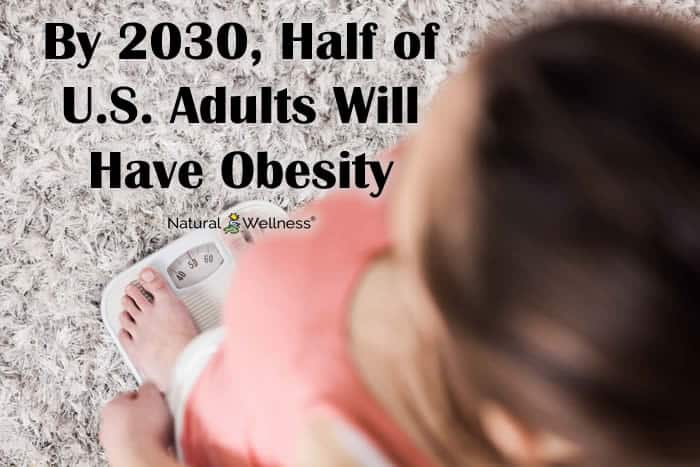The obesity epidemic in the United States continues to grow, and projections are that almost half of the adults in the country will be obese by the year 2030.
Obesity in America affected 41.9% of adults in the years 2017 through March 2020, according to data from the CDC.(1) The most recent Behavioral Risk Factor Surveillance System (BRFSS) data from 2023 shows that obesity rates exceed 35% in 17 states, with West Virginia having the highest rate (41.6%) and Colorado having the lowest (24.9%).(2)
The BRFSS is a national telephone survey of more than 400,000 adults each year and provides the estimates of participants’ height and weight according to the state. Data from this survey, along with the National Health and Nutrition Examination Survey (NHANES), is what the researchers used to collect data and make obesity projections through 2030. The NHANES survey uses data on a variety of health and nutrition measurements to determine the prevalence of major diseases and any risk factors.
Half of U.S. Adults will be Obese
Results of the study, published in The New England Journal of Medicine, suggest that nearly 1 in 2 adults will have obesity (48.9%), with the prevalence being higher than 50% in 29 states and not below 35% in any state. Another prediction is that 1 in 4 adults will be severely obese (24.2%), and the prevalence will be higher than 25% in 25 states.(3)
BMI Chart and Types of Obesity

Body Mass Index (BMI) categories for the study were based on the Centers for Disease Control and Prevention (CDC) guidelines:(4)
- Underweight: BMI of 18.5 or less
- Normal weight: BMI between 18.5 to <25
- Overweight: BMI between 25 to <30
- Obese: BMI of 30 or higher
Obesity is divided into classes:
- Class 1: BMI of 30 to <35
- Class 2: BMI of 35 to <40
- Class 3: BMI of 40 or higher
Class 3 BMI may also be called “extreme” or “severe” obesity.
Calculate Your BMI
Specific Trends and Projections
With these projections comes certain states and demographics that are at higher risk of being obese. Trends were estimated according to:
- Sex (male or female)
- Race or ethnic group (non-Hispanic white, non-Hispanic black, Hispanic, or non-Hispanic other)
- Annual household income (<$20,000, $20,000 to <$50,000, or >$50,000)
- Education (less than high-school graduate, high-school graduate to some college, or college graduate)
- Age group (18 to 39, 40 to 64, or >65)
The results show that obesity and severe obesity are going to be the most common BMI categories among women, non-Hispanic black adults, and low-income adults. Having a lower education and falling within the age group of 40 to 64 also seem to be at higher risk of obesity. (3)
Dealing with severe obesity among low-income adults, and the high medical costs that come with severe obesity, can have serious consequences for future health care costs. Medical expenses for individuals with obesity are $1,861 higher than those of average weight, and the estimated annual medical cost of obesity in the United States was $173 billion in 2019. (1)
Researchers also explored the effects of geography (such as state of residence) within these subgroups.
The top 5 states for overall obesity prevalence included: (3)
- Oklahoma (58.4%)
- Alabama, Arkansas, and Mississippi (58.2%)
- West Virginia (57.5%)
- Louisiana (57.2%)
- Tennessee (55.8%)
The top 5 states for severe obesity prevalence included: (3)
- Arkansas (32.6%)
- Oklahoma and Mississippi (31.7%)
- Louisiana (31.2%)
- West Virginia (30.8%)
- Kansas and Alabama (30.6%)
Colorado is one of the states that comes in at the lowest obesity rate projection. The overall obesity percentage is estimated at 38.2%, with severe obesity at 16.8%. Zachary Ward, chief author and Ph.D. candidate at the Harvard T.H. Chan School of Public Health, interviewed with Reuters Health (5) and said Colorado “has always been one of the best states.” He noted, “People do a lot of outdoor stuff there. Income may be higher. Also, a lot of people live at a higher elevation, and there may be something about having to take a little extra energy to do everything at a higher altitude.”
Along with Colorado, the following states had the lowest percentages for both obesity and severe obesity:
- California (obesity 41.5%, severe obesity 18.3%)
- Massachusetts (obesity 42.3%, severe obesity 20%)
- Hawaii (obesity 41.3%, severe obesity 18.2%)
- New York (obesity 42.8%, severe obesity 19.8%)
How to Prevent Obesity
Obesity is a complex issue and includes achieving and maintaining a healthy lifestyle by the individual. A supportive environment would be helpful in these situations, such as efforts from community leaders, state and local organizations, as well as healthcare professionals to promote healthy living behaviors.
Some ways the community can get involved in promoting healthy food environments, include: (6)
- Improve Nutrition Policies: Implement policies promote food service and nutrition guidelines, and support voucher incentive and produce prescription programs.
- Support Breastfeeding and Early Care and Education Standards: Establish policies to ensure continuity of care for breastfeeding and strengthen obesity prevention standards in early care and education settings.
- Expand Family Health Programs: Develop and sustain Family Healthy Weight Programs to increase access to and participation in family-centered health initiatives.
Physical activity is also an important factor in living a healthier lifestyle. Communities could encourage the use of paths or trails, or open school facilities for public use.

Individual changes should consist of healthy eating and regular physical activity that can be sustained long-term. Working with a dietitian or other healthcare provider can be valuable to learn about balancing calories, nutrition information of food, and other areas to promote a healthy weight.
These ideas and strategies are essential because, unfortunately, obesity comes with many health complications. The following conditions are obesity-related and some of the leading causes of preventable, premature death:
- Heart disease
- Stroke
- Type 2 Diabetes
- Certain types of cancer
Obesity can also cause mental disorders, such as clinical depression and anxiety. Quality of life may decrease, and physical functioning will be increasingly difficult with the additional weight and potential body pain.
Conclusion
Although it is forecasted that about 50% of people in the United States will be obese, and 25% being severely obese, a communal effort can help turn these numbers around. Educating and promoting healthy eating and physical activity is essential, especially at early stages of life, so healthy behaviors can become established.











![Healthy No-Bake Mint Chocolate Truffles [high protein + no added sugar]](https://healthyhelperkaila.com/wp-content/uploads/2024/08/IMG_1902-e1724891697681.png)








 English (US) ·
English (US) ·